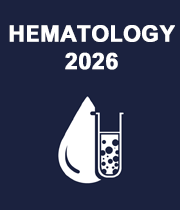Platelets, Coagulation and Intrinsic Factors
Platelets are little blood cells that assist your body stop bleeding by forming clots. When a blood artery in your body is injured, it sends signals to your platelets. Platelets rush to the damaged area and form a plug (clot) to stop the bleeding. Adhesion is the process of a substance spreading across the surface of a damaged blood vessel to halt bleeding. This is because platelets develop sticky tentacles that help them stick (adhere) to one another when they reach the injury site. Chemical signals are also sent out to recruit additional platelets. Aggregation is the process through which more platelets build up on the clot.
Coagulation, also known as clotting, is the transformation of blood from a liquid to a gel, resulting in the formation of a blood clot. It could lead to haemostasis, or the halt of blood loss from a damaged vessel, and then repair. Coagulation is caused by platelet activation, adhesion, and aggregation, as well as fibrin deposition and maturation. After a damage to the endothelium lining a blood artery, coagulation begins nearly immediately. When blood is exposed to the subendothelial space, two processes occur: platelet modifications and the exposure of subendothelial tissue factor to plasma factor VII, which results in the creation of cross-linked fibrin.
Coagulation is the process of forming a blood clot, which is necessary for haemostasis. The body's physiological response to injured blood arteries is haemostasis, which lowers, minimises, and eventually stops bleeding. The creation of a blood clot is characterised by a series of processes known as the coagulation process. Clotting factors are proteins that start processes that trigger other clotting factors. This happens through two routes that come together downstream to establish a single pathway that facilitates haemostasis.



Title : Acute intermittent porphyria: A neurological dilemma obscured by ubiquitous fgastrointestinal presentation
Mayank Anand Singh, Mimer Medical College, India
Title : Comprehensive symptom management and supportive nursing care in a preterm toddler undergoing HSCT for pyruvate kinase deficiency
Tran Thi Dung, Vinmec International Hospital, Vietnam